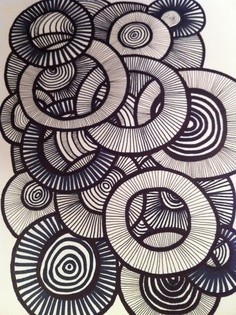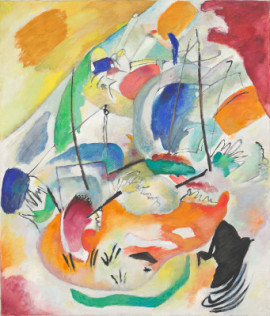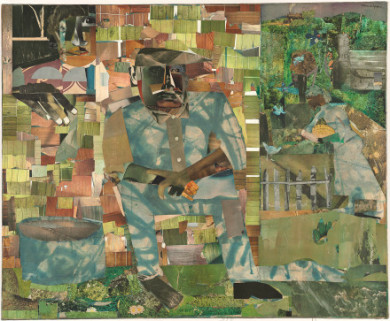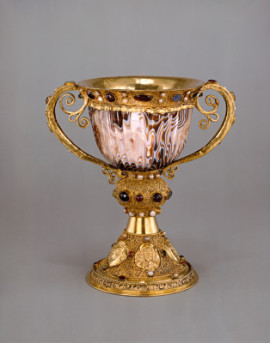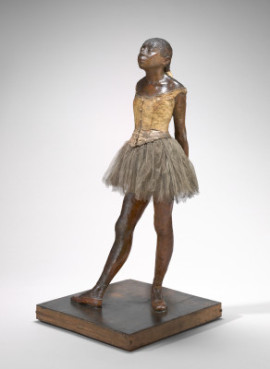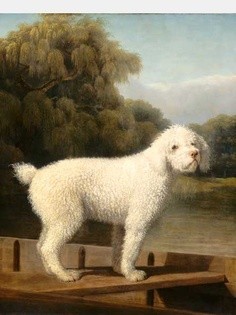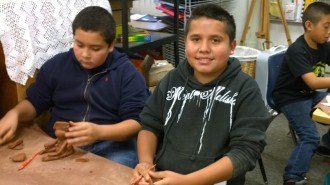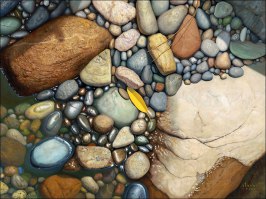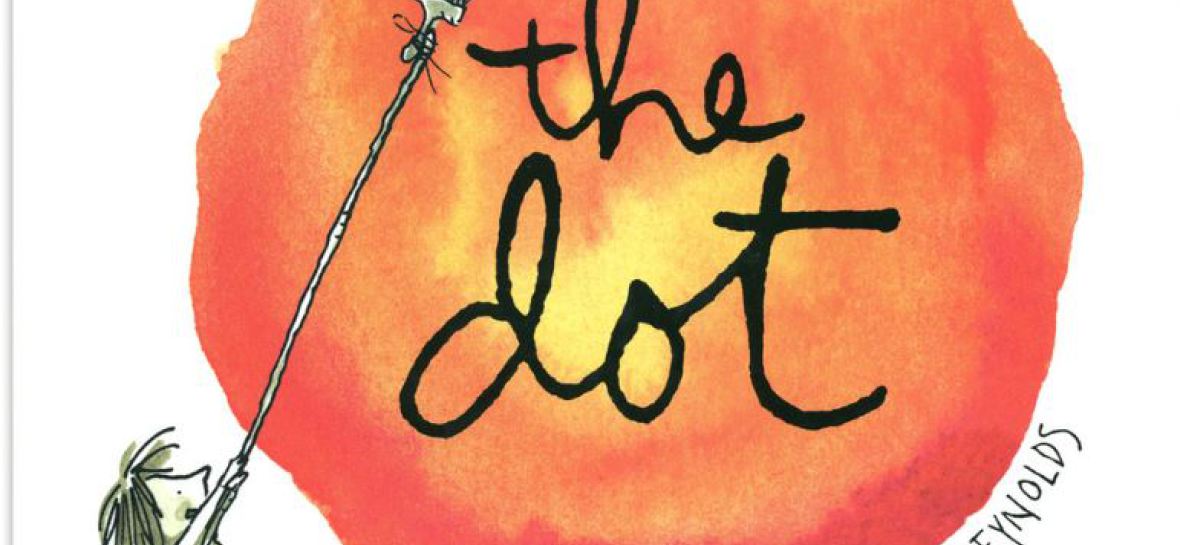

- How to Draw a Butterfly
- How to Draw a Daffodil
- How to Draw A Dragon
- How to Draw Eggs
- How to Draw Landscapes
- How to Draw Lines 1,2,& 3
- Elements of Art
- Nature's Contrast Color Theory
- Finding Values in Color
- Gradient Value
- Golden Mean Fibonacci
- Students' Portfolios
- Mermaids and Sea shells
- The Pumpkin Patch
- Into the Woods
- Deciduous Woods
- Trees and Leaves
- Evergreen Trees
- Squirrels & Hedgehogs
- Art Journal Easter Eggs
- The Mitten
- Zentangles
The Seven Elements of Art
Lines and What they Express
Las Lineas y lo que expresan
|
Element #1 |
|
Element of Art: Line/Lineas |
|
Definition: A line is an identifiable path created by a point moving through space. Vertical, Horizontal, Diagonal, Zigzag, Curved/Curva
|
|
Where do you see Line/Lineas in this work of art? |
|
Solid thick and curving lines enclose centers of circles and outer edges like tires. The lines show circles overlapping and stacking. Thin lines repeat in close, straight mechanical stripes, filling in the space between inner circles and outer circles. Lines twist and swirl in spirals, creating oceanic clusters. |
|
Artwork title: Gang i tusserne Artist: D´jo hanne: Country: Unknown Date: 2013 |
|
Resource: Pintrest, hanneogluka.blogspot.dk
|
Vertical: tall and steady/ altura Y establidad l l l l l l
Horizontal: calm/ calma o paz/calm ______ _____
Diagonal: not steady/inestabiliedad /////
en zigzag/excitement ZZZZZZZ
Curved/Curva movement/movimiento () () ()
|
Element #2 |
|
Element of Art: Color/Colores
|
|
Definition: Reflected light, organized on a color wheel with 3 primary/primarios: red/rojo, yellow/amarillo, and blue/y azul. 3 secondary/secundarios:orange/anaranjado, green/verde, and violet/ y violeta
Tint/matiz = a color + white; un color + blanca Shade/sombras = a color + black; un color + negro Color Contrast/Contraste de colores warm/calidas cool/frescos
|
|
Where do you see this element in this work of art?
|
|
Colors representing the primary red, yellow, and blue, together with secondary colors and intermediate colors splash across the space. Red and yellow define the outside of a white triangle. |
|
Artwork title: Improvisation 31 (Sea Battle) Artist: Wassily Kandinsky oil on canvas Country: Russia Date: 1913 |
|
National Gallery of Art |
|
Element #3 |
|
Element of Art:Shape/Figuras
|
|
Definition: Shapes define objects in space. Shapes are flat and two dimensional, and may be measured by height and width. They may be geometric/geometricas complejas or organic/abstracta. O circle/circulo square/cuadrado triangel/triangulo rectangle/rectangulo diamond/diamante
octogon/octogono star/estrella
|
|
Where do you see this element of art in this work of art?
|
|
In this amazing piece, Romare makes the picture look digitalized with repeating geometric squares;cubist style. But the organic tree, and human form create contrasting softer shapes and I think gives it a dreamy far away feel.
|
|
Artwork title: Tomorrow I May Be Far Away Artist: Bearden, Romare Country: American, Date: 1967 |
|
Resource: National Gallery of Art |
|
Element #4 |
|
|
Element of Art: Form
|
|
|
Definition: Form defines three dimensional objects in space which can be measured by height, width, and depth. Forms may be geometrical or organic.
|
|
|
Where do you see this element of art or principle of design
in this work of art?
|
|
|
Artwork title: Chalice of the Abbot Suger of Saint-Denis Artist: Unknown Country: Italy Date: 2nd/1st century B.C (cup); 1137-1140 (mounting) |
|
|
Resource: National Gallery of Art
|
|
Element #5 |
|
|
Element of Art: Space
|
|
|
Definition: Space refers to the area a form occupies. In two dimensional work it refers to the area within the artwork. Space can be positive or negative.
|
|
|
Sample: Where do you see this element of art in this work of art?
|
|
|
|
|
Artwork title: Little Dancer, Aged 14 Artist: Edgar Degas Country: France Date: 1878-1881 |
|
|
Resource: National Gallery of Art |
|
Element #6 |
|
Element of art: Value
|
|
Definition: Value describes the lightness or darkness of a color. Value in contrast is lightness or darkness standing out from the value that surrounds it |
|
Where do you see this element of art in this work of
art?
|
|
The lighted character in the boat stands out from the darker color values surrounding it. The green plants show value, some of the greens are brighter and some are darker. By mixing white into a color the artist can achieve a tint, by mixing black or a darker color into a color, the artist can achieve shade. |
|
Artwork title: The Voyage of Life: Childhood oil on canvas Artist: Cole, Thomas Country: American, Date: 1842 |
|
Resource: National Gallery of Art |
|
Element Seven |
|
Element of Art : Texture
|
|
Definition: Texture is the quality of surface that we can touch or visual texture that we see. Rough texture has an uneven balance of highlights and shadows.
|
| Where do you see this element of art in this work of art?
|
|
The artist created realistic fur on the dog. It looks like it would be soft to touch. The dog’s fur has highlights and shadows suggest\ a shaggy and uneven surface of fur.
|
|
Artwork title: White Poodle in a Punt Artist: Stubbs, George (painter) oil on canvas Country: British, Date: c. 1780 |
|
Resource: National Gallery of Art Classroom
|
Artful Teaching
Mrs. Schellenberg & Young Artists
Ralph Waldo Emerson's Poem: Success- to leave the world a bit better, whether by a healthy child, a garden patch or a redeemed social condition; To know even one life breathed easier because of you.
Thank you AT&T
We used the wiring for our artful galimotos

